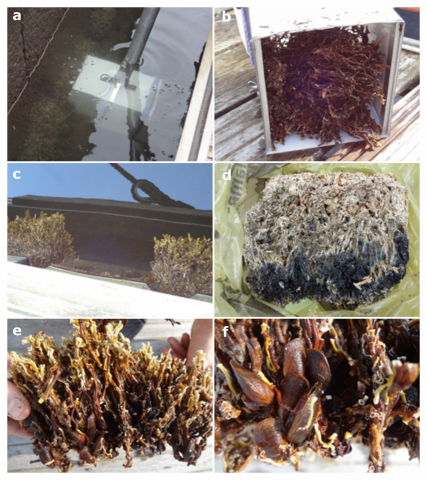
Distribution, associated species and extent of biofouling “reefs” formed by the alien species Ficopomatus enigmaticus (Annelida, Polychaeta) in marinas.
Maud Charles, Robin Faillettaz, Nicolas Desroy, Jérôme Fournier, Katherine Costil. Estuarine, Coastal and Shelf Science, July 2018, https://doi.org/10.1016/j.ecss.2018.07.007
Artificial structures in ports are commonly colonized by non-indigenous epifauna that tolerate high pollution levels. Bioconstructions built by alien species may offer sheltered microhabitats for motile (vagile) animals but biofouling often becomes detrimental to human activities. In this context, the present study provides an inventory of 1) the extent of biofouling related to the alien Polychaeta Ficopomatus enigmaticus on hard structures of marinas in Normandy, France, and 2) the biodiversity of sessile (attached) or vagile (motile) fauna associated with these “reefs”, including both native and alien species. Reefs built by F. enigmaticus were found in 6 out of 12 marinas with oligohaline-mesohaline waters. Significant differences in the total volume of biofouling were found among sites, with maximum values observed in Honfleur’s old basin (459.52 mL per 0.04 m2). Ficopomatus enigmaticus greatly dominated the sessile invertebrate community both in volume (74-100%) and weight (70-100%) in 5 out of 6 marinas. The fouling formed by 5 alien species was colonized by 15 motile invertebrate taxa, including 3 cryptogenic or alien species. The alien crab Rhithropanopeus harrisi displayed the highest frequency of occurrence (>80%) and mean density (>300 ind m-2), and the global densities of sessile (except F. enigmaticus) and motile fauna were significantly correlated (r=0.824; p<0.05). While motile fauna density was also significantly correlated with the biovolume of B. improvisus and M. leucophaeata, it was not with F. enigmaticus (r=0.421; p>0.05). In line with previous studies, these results suggest that F. enigmaticus acts as an engineer offering shelter for reef-associated organisms. In addition, results suggest that at the regional scale, inter-site differences in motile fauna may reflect differences in environmental parameters such as salinity. The presence of F. enigmaticus at low salinity levels led to assess its potential distribution at the scale of the European coasts, suggesting that in the context of climate change, favorable conditions for spawning (>18°C) will likely expand towards the North, and particularly in the eastern and northern Baltic Sea.
BOREA contact : Katherine COSTIL, katherine.costil@unicaen.fr

